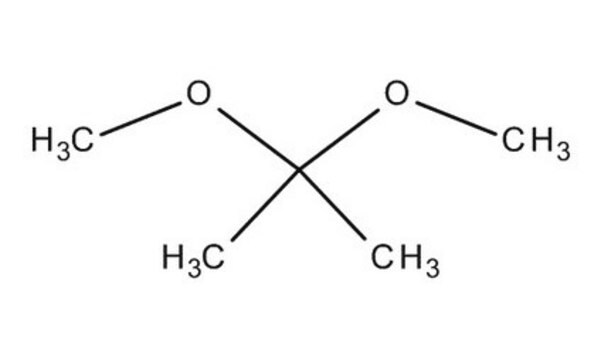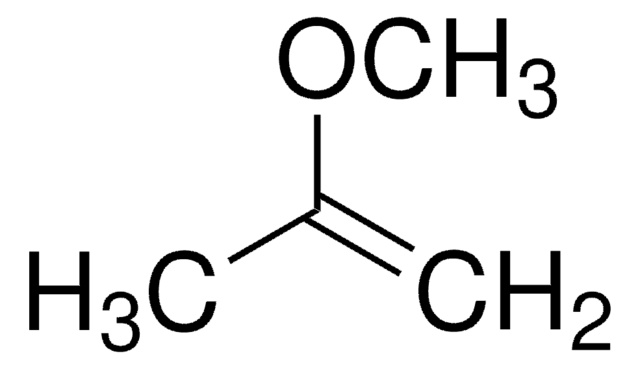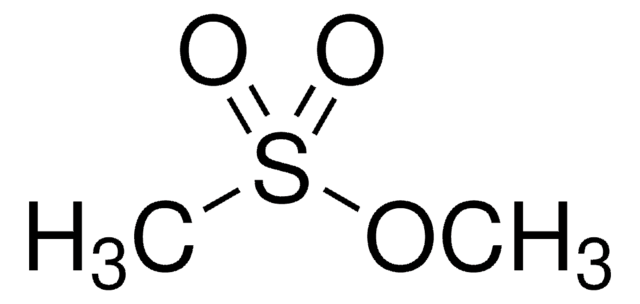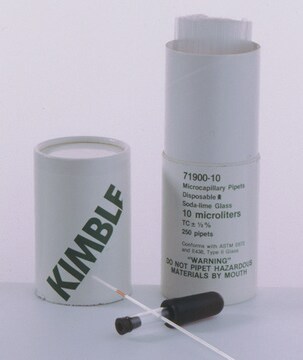73137
2,2-Dimethoxypropane
analytical standard
Synonim(y):
Acetone dimethyl acetal
About This Item
Polecane produkty
klasa czystości
analytical standard
Poziom jakości
gęstość pary
3.59 (vs air)
ciśnienie pary
60 mmHg ( 15.8 °C)
Próba
≥99.4% (GC)
okres trwałości
limited shelf life, expiry date on the label
granice wybuchowości
31 %, 58 °F
6 %, 27 °F
metody
HPLC: suitable
gas chromatography (GC): suitable
współczynnik refrakcji
n20/D 1.378 (lit.)
n20/D 1.378
tw
79-81 °C
83 °C (lit.)
gęstość
0.847 g/mL at 25 °C (lit.)
Zastosowanie
environmental
format
neat
ciąg SMILES
COC(C)(C)OC
InChI
1S/C5H12O2/c1-5(2,6-3)7-4/h1-4H3
Klucz InChI
HEWZVZIVELJPQZ-UHFFFAOYSA-N
Szukasz podobnych produktów? Odwiedź Przewodnik dotyczący porównywania produktów
Opis ogólny
Zastosowanie
Hasło ostrzegawcze
Danger
Zwroty wskazujące rodzaj zagrożenia
Zwroty wskazujące środki ostrożności
Klasyfikacja zagrożeń
Eye Irrit. 2 - Flam. Liq. 2
Zagrożenia dodatkowe
Kod klasy składowania
3 - Flammable liquids
Klasa zagrożenia wodnego (WGK)
WGK 2
Temperatura zapłonu (°F)
14.0 °F
Temperatura zapłonu (°C)
-10 °C
Środki ochrony indywidualnej
Eyeshields, Faceshields, Gloves, type ABEK (EN14387) respirator filter
Wybierz jedną z najnowszych wersji:
Masz już ten produkt?
Dokumenty związane z niedawno zakupionymi produktami zostały zamieszczone w Bibliotece dokumentów.
Klienci oglądali również te produkty
Nasz zespół naukowców ma doświadczenie we wszystkich obszarach badań, w tym w naukach przyrodniczych, materiałoznawstwie, syntezie chemicznej, chromatografii, analityce i wielu innych dziedzinach.
Skontaktuj się z zespołem ds. pomocy technicznej











